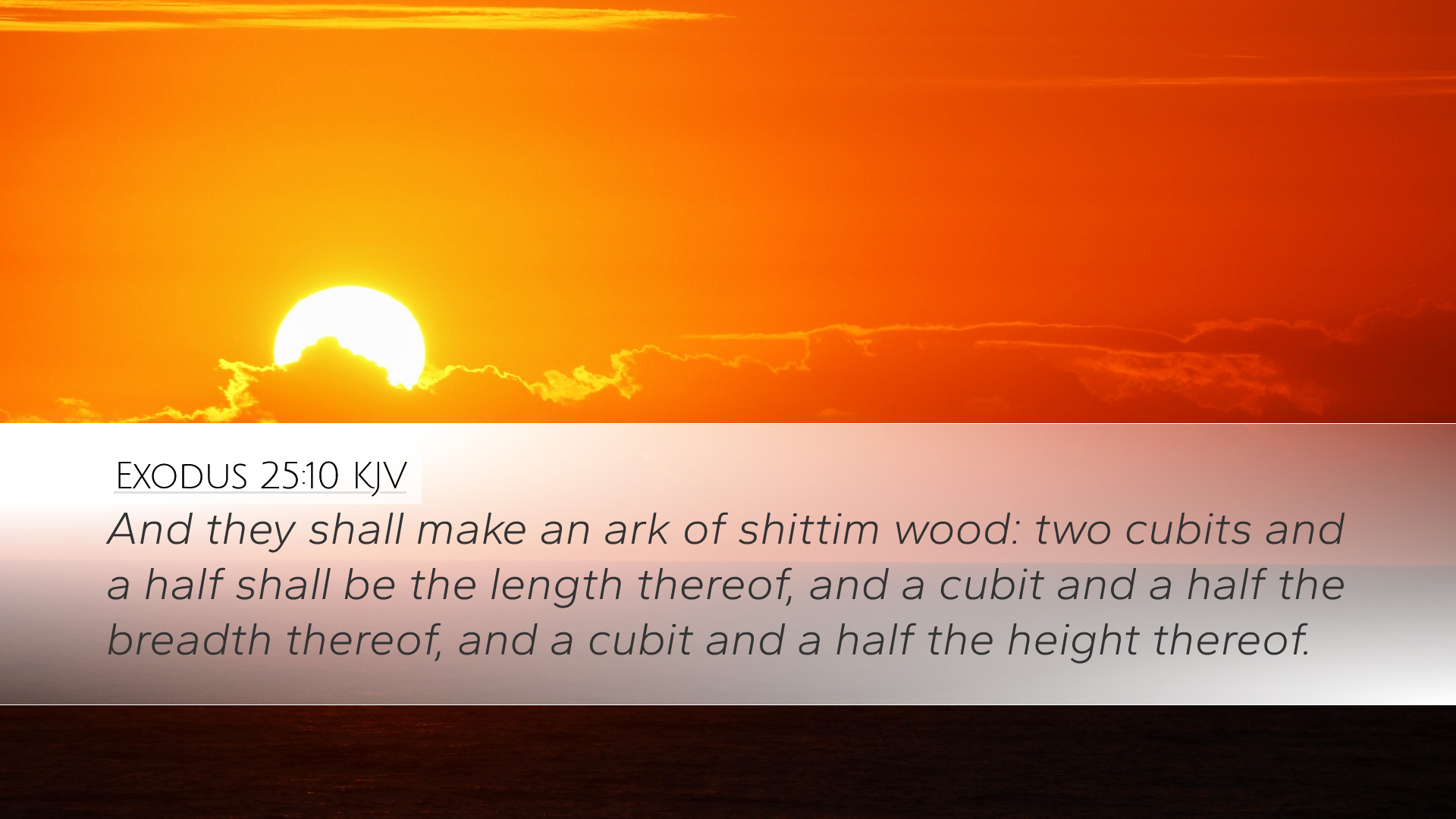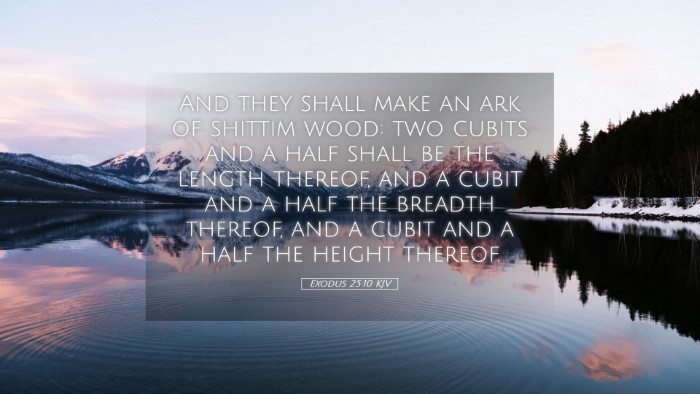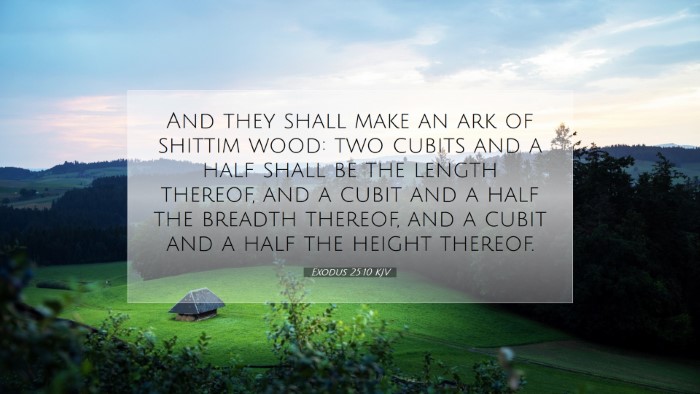Commentary on Exodus 25:10
Verse: "And they shall make an ark of shittim wood: two cubits and a half shall be the length of it, and a cubit and a half the breadth of it, and a cubit and a half the height of it."
Introduction
Exodus 25:10 presents the divine instructions for the construction of the Ark of the Covenant, a central element of Israel’s worship and a symbol of God's presence. The details provided in this verse are foundational to understanding the significance of the Ark not only in the context of the Israelite worship but also in the broader narrative of the Scripture. Our analysis synthesizes insights from prominent public domain commentaries, shedding light on the theological and historical implications of this instruction.
Construction Specifications
The dimensions given — two and a half cubits long, one and a half cubits wide, and one and a half cubits high — indicate a divine precision in the design. As noted by Matthew Henry, these measurements are significant as they allow for efficient transport and usability while maintaining a sense of grandeur pertinent to its sacred purpose.
- Cubic Measurements: The use of cubits (approximately 18 inches) reflects an ancient standard of measurement, which emphasizes both practical construction and the intended reverence for the Ark.
- Material Choice: The choice of shittim (acacia) wood highlights a common yet durable material of the region, reflective of both the resourcefulness of the Israelites and the natural world from which they were to draw.
Theological Significance
Albert Barnes emphasizes that the Ark serves as a reminder of God's covenant with Israel. Its very presence among the people signifies the divine protection and guidance promised to them. The instructions not only illustrate craft but point toward the sacred relationship between God and His people.
The Ark was to be the repository of the tablets of the Law, symbolizing God’s Word and His guidance for the people. The imbuement of such an object with existential significance showcases God’s desire to dwell among His creation, hence establishing a tangible connection between heaven and earth. This reality is poignantly represented in the construction of the Ark as a place where God would communicate with Moses.
Symbolism of the Ark
The Ark is rich with symbolism:
- God’s Presence: Immanuel, "God with us," is manifest in the Ark, suggesting that God is not distant but actively involved in the life of His people.
- Covenant Relationship: The Ark embodies the covenant relationship, emphasizing that God is committed to His promises despite Israel's shortcomings.
- Judgment and Mercy: The mercy seat atop the Ark symbolizes both judgment (the tablets of the Law) and mercy (the blood of atonement sprinkled on the mercy seat), central in understanding God’s justice and grace.
Implications for Worship
The construction of the Ark carries implications for worship practices among the Israelites. Adam Clarke notes that as the focal point in the Tabernacle, the Ark would assume a sacred space within which the community could encounter God. This context helps to underline the reverence and order expected in approaching God. Worship was not merely a series of rituals; it was an encounter with the holy.
The dimensions and materials also speak to the balance of beauty and functionality in worship. The Ark was to be made with a sense of awe, reflecting God’s holiness and the respect due to Him. Churches today can learn from this balance, ensuring that their spaces for worship convey a sense of divine presence.
Conclusion
In examining Exodus 25:10, we recognize that the instructions provided are more than mere architectural blueprints; they are a profound representation of God’s desire to dwell among His people, to embody their worship, and to affirm His covenantal promise. Pastors, students, and theologians alike will find that the Ark of the Covenant invites ongoing reflection on the nature of God’s engagement through history, culminating in the person of Jesus Christ, who demonstrates the ultimate revelation of God's presence with us. Thus, this verse calls for a deepened appreciation of divine intimacy, encouraging a meaningful engagement with the sacred in our worship and lives.


